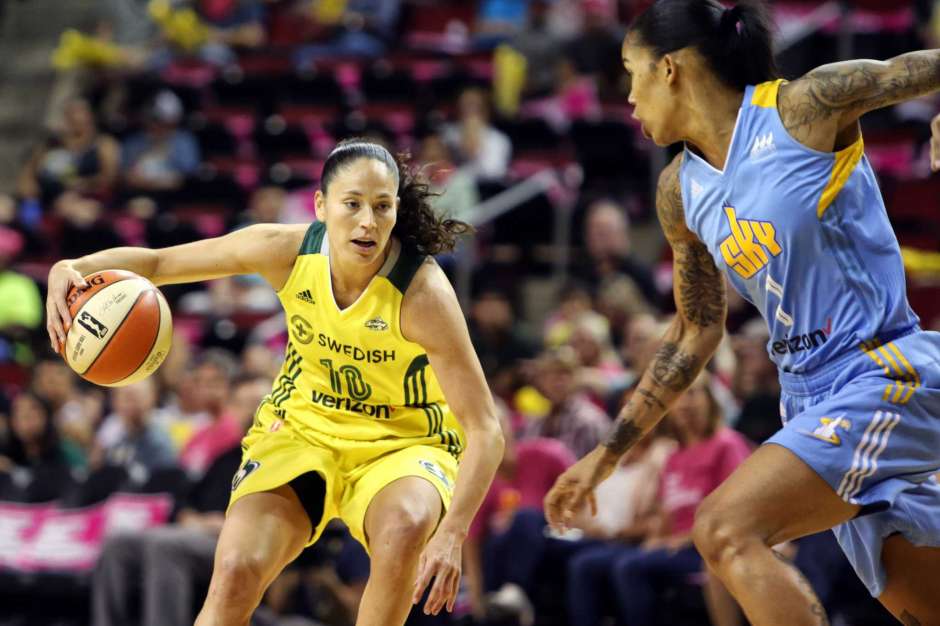
The Seattle Storm have faced more adversity than a typical defending champion this season. Breanna Stewart’s torn Achilles, Dan Hughes’ cancerous tumor and Sue Bird’s possibly season-ending knee surgery have all made sure of that
All these compounding factors made it reasonable to assume that this would be a lost year for the Storm, one in which they would probably miss the playoffs even in a league where 66% of the teams get a chance to play on for a championship. That would’ve been okay given the circumstances; it’s hard to imagine any team making the playoffs after losing its 2 best players even if they are the reigning champs.
This, however, is not what has happened in Seattle.
Instead of rolling over at the sight of the hand they were dealt, the Storm have rallied and have made it all the way up to 4th place in the WNBA with a 12-8 record, sitting just 1 game back of 1st place. It’s not as if the adversity stopped once the season started either; key contributors who came into the season healthy have missed significant time as well. Jewel Loyd who many considered their best remaining player coming into the season, has missed 7 games due to an ankle sprain. Jordin Canada, who has been placed as the team’s starting point guard in Bird’s absence, has missed 3 games herself (this is particularly noteworthy given the team’s lack of depth at the position).
So how exactly are the Storm doing this?
There are a few different factors that are contributing to the Storm’s success, some of which might not be sustainable such as their success in the clutch. On the sustainable side, their defense has carried over from last year and they are currently 2nd in defensive rating at 93 points per game, trailing only the Las Vegas Aces. This is unsurprising even with the injuries because the absence of Stewart and Bird was always going to be felt more on the offensive end without go-to playmakers. (The stats bear this out as well, as the Storm are down to 6th in offensive rating compared to 2nd last year).
So far this season, Seattle is battling the shot clock more because of that lack of a bonafide scoring threat. The offense, however, is still staying afloat in large part because they are bombing away from 3. The Storm are 2nd in both three-pointers made and three-pointers attempted; overall, the three-ball makes up 28.4% of their shot distribution, which is tied for 3rd .
With all the bombing away from three, Seattle needs balance, and that has to come in the form of a breakthrough from Natasha Howard. Howard, who played center last year next to Stewart, has shifted over to power forward in her absence and has taken over her role as leading scorer. She hasn’t been very efficient, posting just a 45% effective field-goal percentage, but at a certain point you just need someone who can create shots.
Create shots she has.
Howard is averaging 16 shots—by far a career high, up from her previous career best 9.4 that she posted last season—and has a 30.3 usage rate. That USG is 2nd in the league behind only the New York Liberty’s Tina Charles.
But where Howard really shines is on defense. The Storm hold a 90.0 defensive rating when Howard is on the floor, and she also leads the league in defensive win shares.
The increase in volume and the sustained defensive excellence have earned Howard her first All-Star appearance, which puts a stamp on what has been such a remarkable improvement for a player who was thrust into a role she wasn’t expecting. It says a lot about her place in the league going forward as someone who has been overlooked throughout her entire career. Before arriving in Seattle, she had primarily come off the bench in each of her previous 2 stops in the WNBA; now she’s an MVP candidate leading her team to a winning record and a probable playoff berth.
Howard’s brilliance and the team’s stingy defense encapsulate the Storm’s performance in the clutch, not to mention the way they are pulling off these wins. The WNBA defines clutch as a game where the score differential is 5 points or less with less than 5 minutes left in the game. The Storm have gone on to win 8 games that fall into this category, 66% of their wins this season.
Crunch time is when the Storm’s defense is at its peak and the lack of an elite scorer is most noticeable. They’ve shot a measly 35% from the field in the clutch, but their defense has forced even worse results from their opponents.
It’s worth noting, however, there’s debate about whether clutch success is something that’s sustainable or something that averages out over time. If it is something that averages out it could mean a crash down to Earth on their dream season. And in a lot of ways that’s been the worry about the Storm this whole run this season. Could there be a collapse around the corner?
So far, the answer has been no, and it’s unlikely that changes, at least as it applies to regular-season success. With 14 games left and over half the season played, they’re favored to make the playoffs, so it’s just a matter of seeding.
Because of their lack of firepower, they probably don’t have the ability to make much noise once they get to the postseason, but there’s no shame in that. They’ve already displayed what it means to have the heart of a champion and they won’t go out without a fight.
The Storm have been displaced this season, as Key Arena undergoes renovations, splitting time between Angel of the Winds Arena and Alaska Airlines Arena, putting a delay on when a championship banner will be raised at home. This is a unique footnote to a unique season.
Ultimately, it’s just another piece of adversity Seattle has faced. But if you’ve watched the Storm this season, you know that adversity doesn’t phase them.





Adversity does NOT phase them!